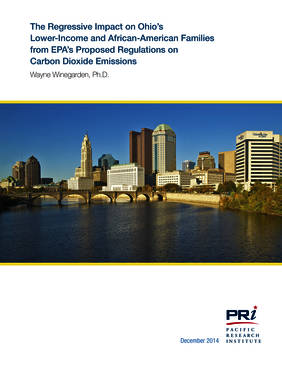The Environmental Protection Agencys (EPA) proposed new rules on carbon dioxide emissions (CO2) for existing power plants will significantly increase electricity prices, especially in states such as Ohio that rely on coal-powered electricity. The higher electricity costs will fall most heavily on lower-income families and the weight of the adverse economic impact will disproportionately impact Ohios African-American households.

Under EPAs new regulations, the average annual electricity cost would rise from 2.9 percent of the average Ohio households income to 3.8 percent. For the average African-American household, average annual spending on electricity would rise from 4.5 percent to 5.8 percent. Lower-income African-Americans would bear an even larger burden. Households in lower-income African-American neighborhoods would be hardest hit with the cost of electricity equaling 26 percent of household income, or even higher.
In contrast to the average and lower-income households, higher-income households in Ohio would be least affected by the EPAs proposed rules. For example, in parts of Clermont County their average electricity costs would rise from a relatively modest 0.8 percent to 1.1 percent of their household income a relatively small increase compared to the average household.

